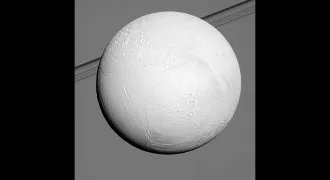All Stories
-
 Life
LifeCats versus viruses: Arms race goes back millennia
A special protein has been protecting cats from feline AIDS for at least 60,000 years, genetic analysis suggests.
-
 Animals
AnimalsCat-versus-virus arms race goes back millennia
Researchers have found evidence of an ancient arms race between Felis silvestris catus, the species familiar today as the domestic cat, and feline immunodeficiency virus.
-
 Planetary Science
Planetary ScienceCassini preps to shower in Enceladus’ ocean
The Cassini spacecraft is gearing up for one last plunge through the water geysers on Enceladus, an icy moon of Saturn.
-
 Health & Medicine
Health & MedicineEating meat officially raises cancer risk
Eating processed meats like bacon, ham and sausage causes cancer, says the World Health Organization.
-
 Quantum Physics
Quantum PhysicsLight mimics hotel with limitless vacancies
By mimicking a mathematician’s method for creating vacancies in a hotel with an infinite number of rooms, physicists may have found a way of increasing the amount of data that can be carried via light.
By Andrew Grant -
 Animals
AnimalsSalamander ancestors could regenerate limbs
Salamanders and ancient amphibians share similar way of regenerating limbs.
-
 Climate
ClimateWi-Fi threatens weather forecasts
Interference from wireless technology threatens the usefulness of weather radar, meteorologists warn.
-
 Psychology
PsychologyViews on bias can be biased
When presented with a study showing bias against women, male scientists are more inclined to nitpick the results. But a little intervention can go a long way toward gender equality in science.
-
 Quantum Physics
Quantum PhysicsQuantum interpretations feel the heat
Landauer’s principle shows a way to test competing interpretations about quantum physics.
-
 Planetary Science
Planetary ScienceAsteroid set for Halloween flyby
Large asteroid will pass Earth just beyond the moon’s orbit on Halloween.
-
 Astronomy
AstronomyComet carries alcohol, sugar
Sugar and alcohol are just two of the ingredients that go into making a comet.
-
 Climate
ClimateHurricane Patricia’s howling winds smash records
Hurricane Patricia’s winds are now the fastest ever recorded in a tropical cyclone, making it the strongest hurricane on record in the Western Hemisphere.